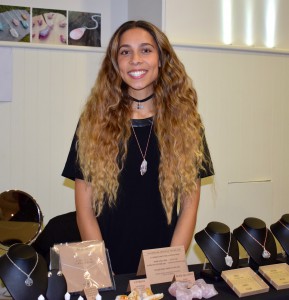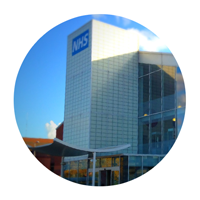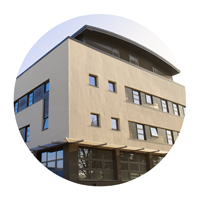1) How many children under the age of 18 have been treated for alcohol poisoning between Jan 2014 and Jan 2016? Please could we get a monthly breakdown.
2) The age of the youngest patient.
Please see attached document FOI4963
If your Trust provides private patient services, please supply the following information.
1a How many beds did the Trust have for NHS services in 2012?1,420
1b How many beds does the Trust have for NHS services in 2017?1,530
2a How many beds did the Trust have for private patients in 2012? None
2b How many beds does the Trust have for private patients in 2017 None
The number of paediatric patients you have seen between January 1st 2014 and December 31st 2014 for the treatment of eating disorders
There were 15
The number of paediatric patients you have seen between January 1st 2015 and December 31st 2015 for the treatment of eating disorders
There were 25
The number of paediatric patients you have seen between January 1st 2016 and December 31st 2016 for the treatment of eating disorders
There were 19
How many of the paediatric patients were aged 10 and under between January 1st 2014 and December 31st 2014
There were 0
How many of the paediatric patients were aged 10 and under between January 1st 2015 and December 31st 2015
There were 1 (highlighted as fewer than 5)
How many of the paediatric patients were aged 10 and under between January 1st 2016 and December 31st 2016
There were 0
How many of the paediatric patients were aged 11-16 between January 1st 2014 and December 31st 2014
There were 13
How many of the paediatric patients were aged 11 -16 between January 1st 2015 and December 31st 2015
There were 22
How many of the paediatric patients were aged 11 -16 between January 1st 2016 and December 31st 2016
There were 11
We are conducting an annual national study of attendances to Emergency Departments for assault-related injury and would be grateful if you could provide us with attendance data for 2016.
The data we require are as follows (for period 1st January 2016 and 31st December 2016) . We require the gender of the patient (M or F), the date that they attended due to assault (dd/mm/yyyy) and their age. Age can either be numerical to the nearest year (preferred) or in age bands (“0-10”, “11-17”, “18-30”, “31-50”, “51+”), we can also accept date of birth.
- Please see attached spreadsheet FOI4961
To calculate the level of assault-related injury in England and Wales we also require the total number of attendances for any reason in the year of interest, i.e. 2016.
- In 2016 there were 100, 483 admissions to wards via A&E.
This request refers to the Solihull birth centre.
Please provide me with the following data:
– since 1 December 2014, how many nulliparous women entered the centre to give birth;
1) Between December 2014 and December 2016, 121 nulliparous women entered the centre to give birth.
– since 1 December 2014, how many of those women were transferred to an obstetric unit.
17
– of those transfers, how many were prior to birth.
5
– of those transfers, how many were post birth.
12
1. If I were to be referred to your hospital today (15th December 2016) for a routine dermatology appointment, please indicate the date today and the first available routine new patient appointment (suggested addition). We would aim to see patients within 18 weeks, extra clinics are arranged to meet demand, based on today’s date (29th December patients would be seen by the 4th May 2017
2. For routine referrals, what is the typical waiting time for a new patient appointment for a patient presenting with mild to moderate plaque psoriasis. 10 weeks
3. For urgent referrals, what is the typical time for an otherwise fit 80 year old with a four week history of blistering, suggestive of bullous pemphigoid. We would aim to see patient’s within 2 weeks
4. If I were to be referred to your hospital today (15th December 2016) for an urgent dermatology appointment, please indicate the date today (29th December) and the first available urgent new appointment. We would aim to see patients within 2 weeks, patient would be seen by 13th January 2017
5. In 2015, how many dermatology referrals were inappropriately sent to secondary care or community services for excluded skin condition criteria? We do not hold this information but these are relatively few as all referral letters are seen by consultants prior to the appointment being made.
6. In the year 2015/16 how many non-2 week wait dermatology referrals did you receive and how many breached the 18-week target.
We received 11,816 non-2 week wait dermatology referrals.
1985 breached the 18-week target: (315 inpatient, 1670 outpatient).
Please note, the demand for dermatology services is rising with increasing referrals year by year. Patients are routinely booked in date order but clinical urgency will take priority therefore patients can wait longer and sometimes breach 18 weeks if
- Increases for suspected cancer cases particularly over the period May – October
- Increases in urgent cases
- Patient availability and their choice of clinical location for their first appointment
The above can result in longer waiting times for first appointment therefore prolong the diagnostic process and wait to treatment
It’s Cervical Cancer Prevention Week this week (22 – 28 January) and a young woman from Castle Bromwich in Birmingham is urging women to attend their routine smear test, after surviving cervical cancer herself.
Sophie Rogers is now 25 but was just 22 when she went to see her GP after getting irregular bleeding between periods. Her GP was worried and referred her directly to Heartlands Hospital. Sophie had her appointment a week later, where she had a colposcopy (a simple hospital procedure used to look at the cervix) and the nurse specialist was concerned when she saw abnormalities during the investigation.
Sophie admits that she was scared when she could also see what looked like a tumour during the colposcopy on the screen and she was told that the cells might be cancerous or pre-cancerous and she was invited to see an oncologist at the hospital.
She had a biopsy and before her results were in, she begged the team looking after her to allow her to go on a holiday that had been booked months before. She spent a week in Barcelona and Paris, travelling with ‘little squidgy’ (an affectionately named pillow that she needed after the biopsy made sitting painful.)
When she returned from her break, Sophie was told that it was cancer. It was staged as 1b1 – which meant the cells were restricted to the cervix, but covered a large area. It was at this appointment that she met Julie Smith, gynaecology nurse specialist, who arranged the appointment with the specialist consultant.
The only sure way to remove all of the cancer, and give Sophie the best chance of survival, was to have a radical hysterectomy.
Sophie said: “I was 22 and hadn’t even considered having children yet – so when I was told that a radical hysterectomy was the best method of removing the cancer, but would mean that I wouldn’t be able to have children, I was devastated. I went from not thinking about it, to feeling like the choice was out of my hands.”
Sophie and her long-term boyfriend, Josh, were offered the option of fertility treatment and a cycle of treatment which led to 20 embryos being created and frozen for them to use in the future with the help of a surrogate.
With her fertility options left open, Sophie felt more comfortable about undergoing the six and a half an hour surgery to remove her womb, ovaries, cervix and 13 lymph nodes. Sophie spent six days in hospital initially but returned when she developed lymphoedema. As she had no lymph nodes around her surgery site, lymph fluid could not drain away and led to uncomfortable tissue swelling. She was quickly diagnosed and shown how massage could relieve the symptoms. She will have lymphoedema for the rest of her life, but has learned how to manage it.
Unfortunately the cancer cells had already spread to three of the 13 lymph nodes removed, so Sophie had to undergo a gruelling schedule of chemotherapy, radiotherapy and brachytherapy (internal radiotherapy).
“My body struggled to cope with all the treatment I needed”, she said. “I lost a lot of weight after my surgery and am still trying to put it back on even now. I was also having ‘hot flushes’ which were a symptom of sudden menopause and I’m now on long-term HRT. I felt tired and sick most of the time during chemo and didn’t manage to find an anti-sickness medication that suited me until near the end of my treatment.”
Perhaps surprisingly, Sophie credits her experience with cancer as being one of the best things to ever happen to her.
She explained: “Before I was diagnosed with cancer, I worked as a babywear designer for a supermarket clothing brand. I travelled quite a distance on the M6 to work each day. Having gone into that job straight from university I was determined to prove myself as a designer, so worked long hours to get ahead.
“However, having a break from work while I recovered, gave me plenty of time to think about what was really important to me. I attended relaxation, yoga and meditation sessions at the Cancer Support Centre in Sutton Coldfield, on the advice of my nurse Julie, and found it really helped my sense of wellbeing. I didn’t want to be as busy and stressed as I had been before I was diagnosed.”
“So I quit my job and began making my own crystal healing jewellery as a hobby. I now do it as a business and I couldn’t be happier. Due to my cancer diagnosis, I really appreciate how important my wellbeing and happiness is to my health. I now get to do what I love every day and I’m excited for the future.”
Sophie admits that she wouldn’t have been able to get through it all without the support of her boyfriend Josh, mum Jane, dad Tony and sister Hayley.
“I think it’s harder for those who are watching someone they love going through cancer treatment”, she said. “My family and friends have been amazing. The care I received at all the hospitals I was treated at, Heartlands, City, Queen Elizabeth and the Teenage Cancer Trust Young Persons Unit, was second to none and made it all a lot more bearable.
“I’d advise anyone who’s procrastinating about getting their smear test done, to please do it. Even if you’ve not been invited to have one yet, if you have symptoms that you are worried about, bleeding between periods, pain or you feel something has changed or just isn’t normal for you, see your GP. They can help you. You know your own body, so get it checked out.”
Julie Smith said: “I am delighted that Sophie has made a full recovery. She went through so much and throughout it all she remained positive, upbeat and made us all laugh a lot. I would love to think that Sophie will be become an advocate for the importance of attending for a cervical smear and encourage young women to go for this important test.
“It’s really important to stress that cervical screening is not a test to find cancer. It’s a screening test to detect changes to the cells of the cervix, which are called cervical abnormalities or precancer. Abnormal screening results rarely mean cancer, these cells will often normalise themselves – but the screening programme is the best way to pick up changes and keep an eye on them before they become cancerous.”
For more information about cervical screening and support available, please visit Jo’s Trust website.
1. Within your trust how many intra-vitreal vials/implants have been used in the latest 4 months, if possible between September and December 2016
3050
2. Please state the number of vials dispensed from your pharmacy in this period, if the number for wet AMD is not known, then regardless of reason for use.
| AFLIBERCEPT 40 mg in 1ml Injection | 1882 |
| DEXAMETHASONE 700 microgram Intravitreal Implant | 41 |
| FLUOCINOLONE ACETONIDE 190 microgram Intravitreal Implant | 8 |
| RANIBIZUMAB 10 mg in 1ml Pre-Filled Syringe | 1375 |
Aflibercept is a vial, the others are implants or pre-filled syringes.
We are unable to link this information to condition.
3. Does your trust record the time taken from referral of a patient for treatment to the time for an injection or implant to be complete? yes
4. If so what is the average waiting time for treatment with an injection of implant? 4 weeks
The following questions refer to any translation from another language into English, or from English into another language.
For the last four financial years, please provide the following details:
1. How much your trust has spent on translation/interpreter services?
Amount spent on external interpreting service:
2012/2013 – £ 79,784
2013/2014 – £ 296,208
2014/2015 – £ 325,178
2015/2016 – £ 375,198
2. How much your trust has been spent on the employment of translators/interpreters?
£ 63,178 spent on Trust- employed interpreters/ translators for each of the last four financial years.
3. How much your trust has spent on employing advocates for non-English speakers?
Nil, we do not employ advocates for non-English speakers
4. Which languages did your interpreters/translators work from or to?
a) Please list each language
| Albanian | Farsi (Persian) | Korean | Portuguese | Tamil |
| Amharic | French | Kurdish Sorani | Pothwari | Telugu |
| Arabic | Fula | Latvian | Punjabi | Thai |
| Armenian | German | Lingala | Pushtu | Tigrinian |
| Badhini | Greek | Lithuanian | Romanian | Turkish |
| Bangla / Bengali | Gujarati | Malay | Russian | Ukrainian |
| British Sign Language | Hakka | Malayalam | Sinhalese | Urdu |
| Bulgarian | Hindi | Mandarin Chinese | Slovak | Vietnamese |
| Cantonese Chinese | Hungarian | Mandinka | Slovenian | Wolof |
| Croatian | Igbo | Mirpuri | Somali | Yoruba |
| Czech | Indonesian | Nepalese | Spanish | |
| Dari | Italian | Oromo | Swahili | |
| Dutch | Japanese | Polish | Sylheti |
b) Please list how many times the interpreters/translators worked for you in each language.
The table below shows Trust-employed interpreters language activity data:
| Languages | 2012/2013 | 2013/2014 | 2014/2015 | 2015/2016 |
| Bengali | 35 | 30 | 27 | 63 |
| Sylheti | 634 | 558 | 675 | 975 |
| Mirpuri | 2468 | 2582 | 2472 | 2049 |
| Punjabi | 296 | 293 | 249 | 344 |
| Pothwari | 223 | 199 | 249 | 344 |
| Urdu | 499 | 435 | 263 | 496 |
We do not hold this information for the External supplier interpreter’s activity data
Please provide the activity figures for your hospital for Radiology.
Please supply the number of exams carried out split by each commissioning GP practice (Practice Code), exam month, modality and Exam type for exams done between 01/04/2016 – 30/9/2016 inclusive (including any associated sites belonging to your Trust eg Community Hospitals).
To enhance privacy protection please supply the exam date as the first of the month/year it occurred in, eg 21/05/2016 as 01/05/2016
The requested information is attached. FOI4964







